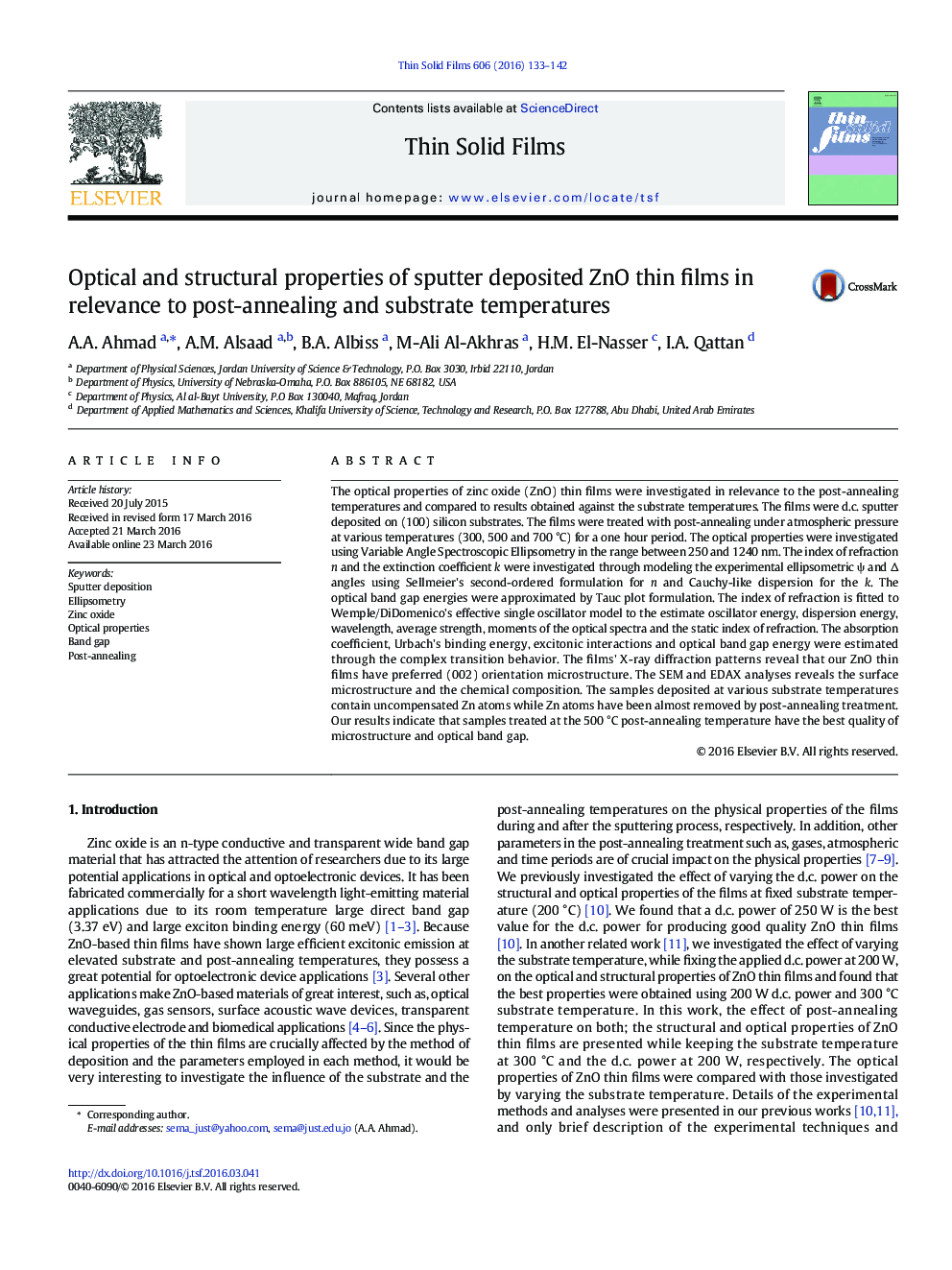| Article ID | Journal | Published Year | Pages | File Type |
|---|---|---|---|---|
| 1664032 | Thin Solid Films | 2016 | 10 Pages |
•ZnO thin films were d.c. sputter deposited on silicon substrates.•Their optical properties were studied in relevance to post-annealing.•The optical properties were related to the growth substrate temperature.•ZnO thin films show systematic changes with heat effect.•The microstructure is investigated by XRD, SEM and EDAX accordingly.
The optical properties of zinc oxide (ZnO) thin films were investigated in relevance to the post-annealing temperatures and compared to results obtained against the substrate temperatures. The films were d.c. sputter deposited on (100) silicon substrates. The films were treated with post-annealing under atmospheric pressure at various temperatures (300, 500 and 700 °C) for a one hour period. The optical properties were investigated using Variable Angle Spectroscopic Ellipsometry in the range between 250 and 1240 nm. The index of refraction n and the extinction coefficient k were investigated through modeling the experimental ellipsometric ψ and Δ angles using Sellmeier's second-ordered formulation for n and Cauchy-like dispersion for the k. The optical band gap energies were approximated by Tauc plot formulation. The index of refraction is fitted to Wemple/DiDomenico's effective single oscillator model to the estimate oscillator energy, dispersion energy, wavelength, average strength, moments of the optical spectra and the static index of refraction. The absorption coefficient, Urbach's binding energy, excitonic interactions and optical band gap energy were estimated through the complex transition behavior. The films' X-ray diffraction patterns reveal that our ZnO thin films have preferred (002) orientation microstructure. The SEM and EDAX analyses reveals the surface microstructure and the chemical composition. The samples deposited at various substrate temperatures contain uncompensated Zn atoms while Zn atoms have been almost removed by post-annealing treatment. Our results indicate that samples treated at the 500 °C post-annealing temperature have the best quality of microstructure and optical band gap.
